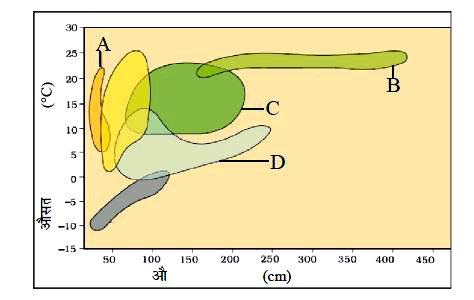The graph given below shows the distribution of biomes:
(a)What do the 'X' and 'Y' axis represent?
 Solution in Punjabi
Solution in Punjabi
Step by step video & image solution for The graph given below shows the distribution of biomes: (a)What do the 'X' and 'Y' axis represent? by Biology experts to help you in doubts & scoring excellent marks in Class 12 exams.
Updated on:21/07/2023Topper's Solved these Questions
Similar Questions
the unique event of flowering plant is-
View SolutionA disease caused by an autosomal primary non-disjunction is.
View Solution. Graph of y=f(x) is given,below then graph of 1f(x) is represented by
View SolutionThe graph below shows the distribution of molecular speeds of two ideal gases X and Y at 200 K . On the basis of the below graph, identify the correct statements .

View SolutionThe graph given below represents the linear equation x+y=0.

View SolutionThe graph given below is showing biome distribution with respect to annual temperature and precipitation. Identify A, B and C, respectively.
View SolutionThe curve given below shows enzymatic activity with relation to three conditions (pH, temperature and substrate concentration). What does the two axis (x and y) represent ?

View SolutionThe graph given below represents the linear equation x+y=0.

View Solutionनीचे दिये गये चित्र में जीवोम/बायोम को पहचानिए :

View SolutionThe given figure shows biome distribution with respect to temperature and precipitation. The option which correctly identifies the biomes marked X and Y respectively is.
View SolutionThe graph given below shows the distribution of biomes: (b) Mark 'grassland' and coniferous forest' biomes.
View SolutionThe graph given below shows the distribution of biomes: (c) Why is 'F' located at the given position in the graph?
View SolutionClimatic Zones and Biomes on Earth || Graph on Biome Distribution
View Solutionग्राफ पेपर पर X-अक्ष और Y-अक्ष को दिखाइए।
View SolutionThe graph given below is showing biome distribution with respect to annual temperature and precipitation. Identify A, B and C, respectively.
View Solution
